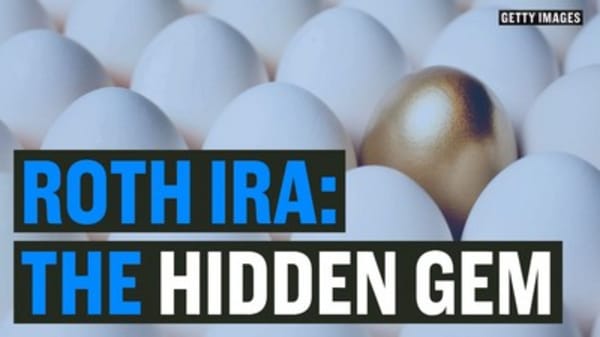When it's several decades away, you might categorize saving for retirement as a back-burner concern.
And when you're younger, contributing to an individual retirement account might seem like an impossible stretch. Yet people who made the leap generally say they're sorry they didn't start earlier.
Millennials seem particularly drawn to Roth IRAs, which are showing an across-the-board uptick from all age groups.
Drawing on investor data, Fidelity found more than half of IRA contributions going into Roth IRAs, and especially from people age 23 to 38. "Millennials opened 41 percent of new Roth IRA accounts in 2018, and 74 percent of their contribution dollars are going into Roths," said Maura Cassidy, vice president of retirement at Fidelity.
More from Invest in You:
Do this now to feel financially secure in future
Friends don't let friends stay clueless about money
Five easy ways to save $1,000 in three months
Ashley Sproul, 40, started her Roth IRA when she was 34 and wishes she'd started sooner. "My dad said to start right away, but I didn't get the importance of tax-free growth."
Sarah Lindsay Miller, 29, maxes out her Roth IRA every year. "I would have funded mine in high school and college if I had known about it," said Miller, an office manager in Estes Park, Colorado.
"I would have funded mine in high school and college if I had known about it." -Sarah Lindsay MillerThe accounts are especially valuable when they are the sole source of retirement savings. Miller's employer does not provide a 401(k). However, she put in the maximum savings possible even when she was contributing to a workplace retirement plan with a former job.
Roth IRA advantagesFor younger people, 30 or 40 years seems like a very long time to not be able to touch the money. Since Roth contributions are made with after-tax dollars, that's not a concern.
"The benefits of the Roth are that you can tap into the contributions you've made tax-free and penalty-free," Cassidy said. "People are finally really understanding that."
show chapters Roth IRA: The hidden gem of investing ... especially for young savers 7:46 AM ET Mon, 10 July 2017 | 01:08
Roth IRA: The hidden gem of investing ... especially for young savers 7:46 AM ET Mon, 10 July 2017 | 01:08 You have to forgo the tempting, immediately available tax break, but you get something better in return, says Mike Hoffman, a director at Verdence Capital Advisors in Maryland: "The contributions and, most importantly, the 30-plus years of earnings, will be tax-free in retirement," Hoffman said.
"This is the year that millennials are estimated to be a larger population than boomers," Fidelity's Cassidy said. "The older millennials are in their 30s, stable in their careers, saving for multiple goals.
"It's great to see them saving for their future," she added.
For her part, Roth owner Sproul said that, although she loves "that it grows tax-free," she's less enthusiastic about the annual contribution limit.
Higher limitsSince the IRS has raised IRA contribution limits, you can contribute $6,000 annually. If you are over age 50 and making catch-up contributions, you can put in an additional $1,000, for a total of $7,000 per year.
"Those are great little bump-ups to take advantage of additional savings," Cassidy said.
You can also earn more and still contribute to a Roth IRA – the income cut-off is $137,000 for single filers, up from $135,000 for single filers in 2018.
If you're still deciding which type of IRA to go with, Hoffman says the traditional IRA is a form of instant gratification because of the upfront tax refund.
"But if you're truly thinking long-term, and what will be better for you and your family many years from now, then you would pick the Roth IRA in most cases," Hoffman said.
Remember: There's still time to make a contribution count for last year. The deadline to make a contribution for 2018 is April 15 in most states.
Disclosure: NBCUniversal and Comcast Ventures are investors in Acorns.
No comments:
Post a Comment